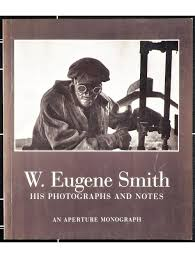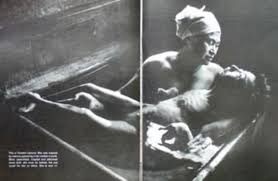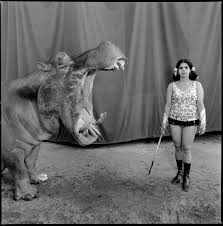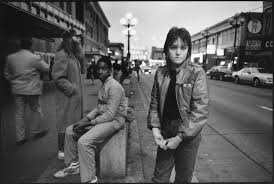W. Eugene Smith ‘His Photographers And Notes’
W. Eugene Smith’s “His Photographers and Notes” is a deeply personal and artistic exploration of his creative process, relationships with other photographers, and the thematic undercurrents in his work. W. Eugene Smith (1918–1978) was known for his work in photojournalism and for his dedication to capturing the emotional and humanistic aspects of his subjects. In “His Photographers and Notes”, Smith reflects on the stories behind the images he created and the process that shaped his iconic style.
Smith’s photography often focused on the raw, unfiltered aspects of human life. His photos depicted real people in real situations—often in times of crisis or profound emotional significance. “His Photographers and Notes” provides insight into how Smith sought to evoke deep emotional resonance through his work, highlighting the human condition with a powerful visual language. He strived to tell stories that went beyond the surface, pushing for empathy and understanding.

One of the most iconic images by W. Eugene Smith is his photograph “Tomoko Uemura in Her Bath” (1971), which is part of his larger photo essay on the Minamata disease in Japan. This photograph is one of Smith’s most powerful images, encapsulating the emotional and social impact of the industrial disaster caused by mercury poisoning.
The composition of this photograph is both simple and intense. The image features Tomoko, with her mother holding her in a bath, gazing directly at the camera. The image is intimate, capturing the deep vulnerability of Tomoko, whose condition is a tragic consequence of the industrial contamination.

Mary Ellen Mark ‘The Photo Essay’
Mary Ellen Mark was a renowned American photographer known for her deeply empathetic and insightful photo essays, which often focused on marginalized communities and individuals. Her work captured moments of human vulnerability, resilience, and complexity, often highlighting social issues and personal struggles. One of her most celebrated photo essays is “Streetwise” (1984), which documents the lives of homeless teenagers in Seattle.

One of Mary Ellen Mark’s most iconic images is “Tiny, Seattle, 1983” from her photo essay “Streetwise”, which documents the lives of homeless teenagers in Seattle. This photograph is often cited as one of her most powerful works, capturing both the rawness of a difficult life and the resilience of a young girl navigating it.
Mary Ellen Mark often used tight framing and close-up portraits in her work, and in this image, the composition is simple yet effective. Tiny is positioned centrally, allowing her to be the focal point of the image. Her face fills the frame, making it impossible to ignore her presence. There is no distraction from the background, which serves to emphasize her facial expression and the rawness of her situation.

